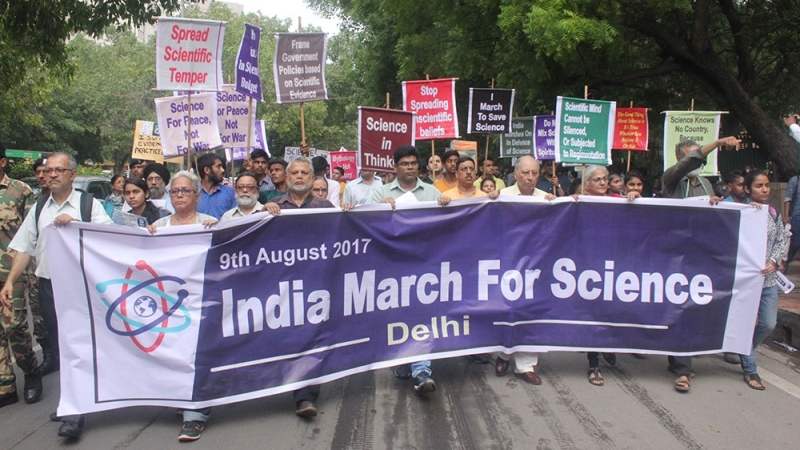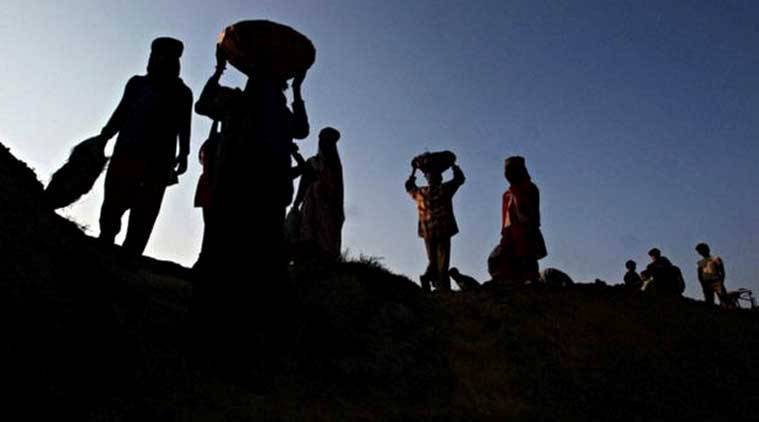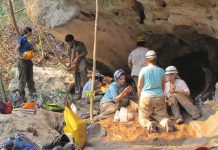
I am aware of the fact that on August 9th in many parts of India, the ‘March for Science’ will be organised. Despite this I insist on calling it a ‘walk’ and not a ‘march’. The word “March” contains a sense of plurality, cohesiveness and perhaps the feeling of strength that arises from being united. These connotations are missing in the word ‘walk’. There might be many of us who might be undergoing a dilemma about whether they should join the March for Science or not. It is them whom I would like to remind that this is not a march in its truest sense, at most it may be considered a walk with a purpose.
Probably it is best to think of it as a walk which is different in various aspects from the familiar versions we are more accustomed to. This is not a walk prescribed by a doctor to control one’s weight nor is it a walk organised by any religious or political outfit to further its cause.
This is a walk which is not directly connected to any personal gain of an individual. Even if all the demands to be made in this walk are met completely, an individual taking part in this event may not be benefitted in his or her lifetime. Still, many scientists and science enthusiasts take part in it as a platform that allows them to articulate their concerns for the society as a whole. It is this collective merger of the walks of discrete individuals that can be seen as taking the character of a march. This makes such a march inclusive and a platform that may further the case of science but that doesn’t limit itself to scientists alone.
This march by itself as well as the reason behind the march may seem unusual to many. Actually, when we talk about a ‘march’; to a typical Indian mind the picture of an important historical moment emerges. Yes, most of us think about the historic Dandi March or Salt March undertaken by M.K. Gandhi to protest against the colonial salt law. Since then various political parties and organisations have organised marches to campaign for or against certain social issues or government policies. Often the marches have been organised for transformative social change.The March for Science is a bit different in its characteristics and demands from the kind of marches that we have discussed above.
The Indian version of the March for Science or India March for Science (IMFS) is an annual march which was initially organised (2017) to showcase solidarity with the corresponding international event called March for Science or Scientists March in Washington. The pioneering march was organised by scientists to protest against the anti-science policies of the Trump government; especially, to protest against his repeated denial to accept the findings of scientific research related to global warming.
In the inaugural march itself, it was declared to be a non-partisan event to celebrate science and till now this particular character of the march is carefully maintained all over the globe. Although IMFS started in solidarity with the scientists of the US, it was always connected to the Indian context. Some issues are definitely global- such us the issue of rapid deforestation in the name of development and job creation, enhanced carbon emission at an unprecedented scale etc but some anti-science policies and anti-science activities are local. Keeping all of them in mind, the March for Science demands scientific evidence based policy making. The success of such policy making is clear in the complete eradication of smallpox, the near eradication of polio etc. Once India did pioneer in scientific evidence based policy making through the establishment of Indian Statistical Institute and by involving it in providing necessary inputs for policy making however, the tradition set in the early years of independent India has not been strictly followed in recent times.
IMFS demands a considerable increase in the central and the state budgets for education. It further demands that 3% of the GDP should be allocated for scientific and technological research. The last two demands are to some extent local, but very important for the future of our country. Isolated events like Mars Mission or Chandrayan or isolated explosion of brilliance from certain institutes or individuals will not be able to make us a developed country. Opportunities need to be provided to every present and future scientist.
Unbiased and enhanced funding for science may be able to do so. At the moment, the percentage of GDP allocated for research and education is extremely low, and every practicing scientist knows that a good amount of the allocated\sanctioned fund is actually never released; research scholars often receive their salaries after prolonged delays. Further, whatever little fund is available for scientific research and education is often distributed in a biased manner- some high profile institutes get a major chunk of the money even if their projects are not competitive.
In this scenario, the increase in funding along with unbiased funding (as demanded by the IMFS) may considerably brighten our future.
Finally, in this march, the notion of science is not considered to be restricted to core scientific research done in the labs- it’s much beyond that. The notion of science includes scientific thinking or scientific attitude, it also includes rationality and that’s why it demands to honour Article 51A of our Constitution and to stop the propagation of unscientific thoughts. The notion of science is indeed very broad- when a day-labourer donates blood without fear, we celebrate the success of science, when a fisherman safely returns home just before a cyclone we celebrate science, when a family compares the blood group (instead of Kundli and horoscopes) of the prospective bride and groom before their marriage we celebrate science. March for Science is yet another way to celebrate science.
Since the last three years, many of us have come across calls for joining the March for Science. Any such call or invitation essentially leads to a couple of questions- do I really need to walk for science and is it really worth it it ? Science reveals the eternal truth or models the nature in simple terms. Nature and scientific laws are independent of whether I walk or not. For example, Bruno was burnt alive, Galileo was house arrested for eight years (until his death in 1642), and the church took 350 years to realise and declare that the Earth moves around the Sun. Irrespective of whether people marched in front of the Vatican or not the Earth has been revolving around the Sun and will keep on moving for a couple of billion years more. Then why should we march for science?
Of course, science moved on and it never waited for the declaration of the church, but many of us have failed to learn the lesson from history. This is evident in the frequent anti-Darwin statements presented as scientific papers in the Indian Science Congress and in the killing of rationalists in India and Bangladesh. These are instances that make it important for us to walk for science. When I read the news of train accidents due to fog, when I read about the collapse of bridges in Calcutta or the death of children in Gorakhpur– I feel the urge to march for science.
It’s not that I feel the urge to march for science for all the negative reasons. I do feel the urge to do responsible science and to walk for science when I see that our celebrated space programs help us save many lives and an enormous amount of resources during disastrous cyclones such as the recent cyclone Fani that struck eastern India.
Before I conclude, I must confess that being a scientist, I cannot put all the responsibilities on the government and the policy makers and wash off my hands. I do need to take responsibility to justify the use of funding that I receive from the taxpayers’ money. I need to come out of the rat race where a scientist’s value is measured by the extent of grants he\she has received. If the policy is not appropriate, some of us need to follow Meghnad Saha and take part in policy making as directly as possible. Here it would be apt to quote Saha when he says,
“Scientists are often accused of living in an Ivory Tower and not troubling their mind about realities; apart from my association with the political movement of juvenile years, I lived in the Ivory Tower till 1930”.
He recalls that after 1930 he came out of that ivory tower, and heavily contributed to the process of river planning, the formation of the Planning Commission, to calendar reform and to the process of industrialisation. To ensure that scientific inputs were considered in the process of policy making he even contested in the first General Election of India and won against the Congress candidate and strongly put his views before the Parliament. He was the man who walked out of his laboratory to ensure scientific evidence based policy making. So it’s not like we are walking out of our comfort zones for the last three years only. Scientists are walking for similar demands since long.
Coming back to the question posed in the title of this article, here is what I would like to share with my readers. Whether or not you walk for science is your choice. In fact, it’s the choice of an individual as to what he/she wants to believe. Whether she/he would like to believe that forests are essential as vital suppliers of oxygen on earth and agents that ensure rainfall or whether they want to believe that its not forests but cows that breathe out oxygen! It is all a matter of faith for many of us but we as scientist have no choice. After all, we are the privileged citizens of an underprivileged country and we have to be true to our job both inside and outside the laboratory.
Prof. Anirban Pathak teaches Physics at JIIT, Noida. He is the recipient of the 2017 Shri O.P. Bhasin Award in the field of Electronics and Information Techology.










